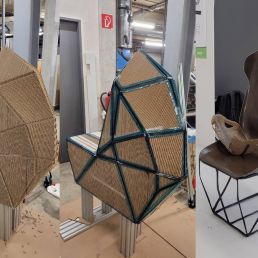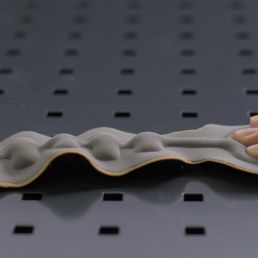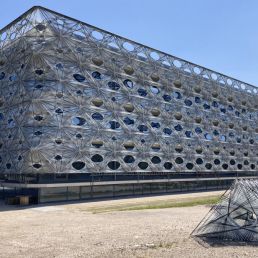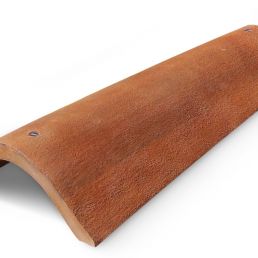Focus on New Materials
Close-Up Magazine talking to Dr. Sascha Peters
Close-Up Magazine, August 2011
Red Circle Media

This year’s international festival of design, DMY Berlin, now in its ninth year, has paid special attention to new materials, which are at the heart of a revolution in aesthetics, technology and economics. We met Sascha Peters, organiser from DMY’s materials workshop, and author of the book “Material Revolution”.
Close-Up: What were the outcomes of the Materials workshop that was held at DMY in Berlin?
Dr. Sascha Peters: We have put together 21 companies producing new materials (divided into: light structures and textile materials, smart and functional materials, organic and eco-sustainable materials), with the end users – engineers, architects, designers – inviting them to a creative brainstorming. The time available was not sufficient to develop real projects or new applications, but the workshop has proved an excellent platform for the presentation and communication of new materials.
Close-Up: How and why do new materials come about?
The search for new materials stems from an ever more pressing need, to find an alternative to the raw materials and oil we get from fossils. Innovation can result from an accidental discovery, as in the case of “sea balls”, aggregates of sea grass collected on a Sicilian beach for a bonfire and then proved, contrary to appearances, not to be a suitable fuel. Or it is the result of a search that starts from the “function” for which a material is intended. But the most stunning results are obtained in the laboratory by mimicking the principles of organic growth that occur in nature: the case of cellulose produced by bacteria, or EcoCradle, a substitute organic polystyrene from Ecovative Design (USA) with a foam of fungal origin and cereal husks.
Close-Up: What are the latest opportunities in the field of textile and ceramics?
In the field of textile, innovations are diverse: from tissues fortified with heat-sensitive pigments that change colour depending on the wearer, to those containing luminescent particles, and light up in the dark (DigitalDawn of Loop.ph); then onto the rediscovery of ancient fabrics, made with traditional techniques (Barktex), ultra-light, high performance technological fabrics, which use nanotechnology (Aerofabríx), to those made with cellulose produced by bacteria (Biocouture). As for the ceramic industry, the main innovation is Hydrotect, based on titanium dioxide, which gives the tiles antibacterial and (even) de-pollution properties. Another novelty is the so-called nanoceramic. An example is the ceramic wallpaper ccflex wallpaper, that could replace tiles.
image: DigitalDawn (source: Loop.ph, UK)
Ecoblaq molecular wood colours
23 March 2024
Ecoblaq is a molecule manipulation method, a natural chemical reaction, making…
Natural fiber reinforced car seat
22 October 2023
The focus of the project "Design for Recycling" is a seat shell that is made…
MotorSkins morphing textiles
19 April 2022
Berlin based start-up MotorSkins designs and produces textiles with embedded…
3D Pioneers Challenge 2022
15 December 2021
The 3D Pioneers Challenge 2022 adresses tech pioneers who pave the way for…
IGNIS – Light from waste heat energy
12 August 2020
The availability of affordable, independent and, above all, clean electrical…
Brake disc with reduced fine dust
21 April 2021
Fine dust endangers our health. One of the main sources is traffic, especially…
Texoversum
15 July 2023
With the "Texoversum", Reutlingen University has put into operation a training…
Invisible Terracotta Solar Rooftile
10 May 2023
The family-run business Dyaqua has developed a technology to integrate a…
Xarvio – Digital Farming
8 January 2021
BASF Digital Farming GmbH has received the renowned Crop Science Award for the…








